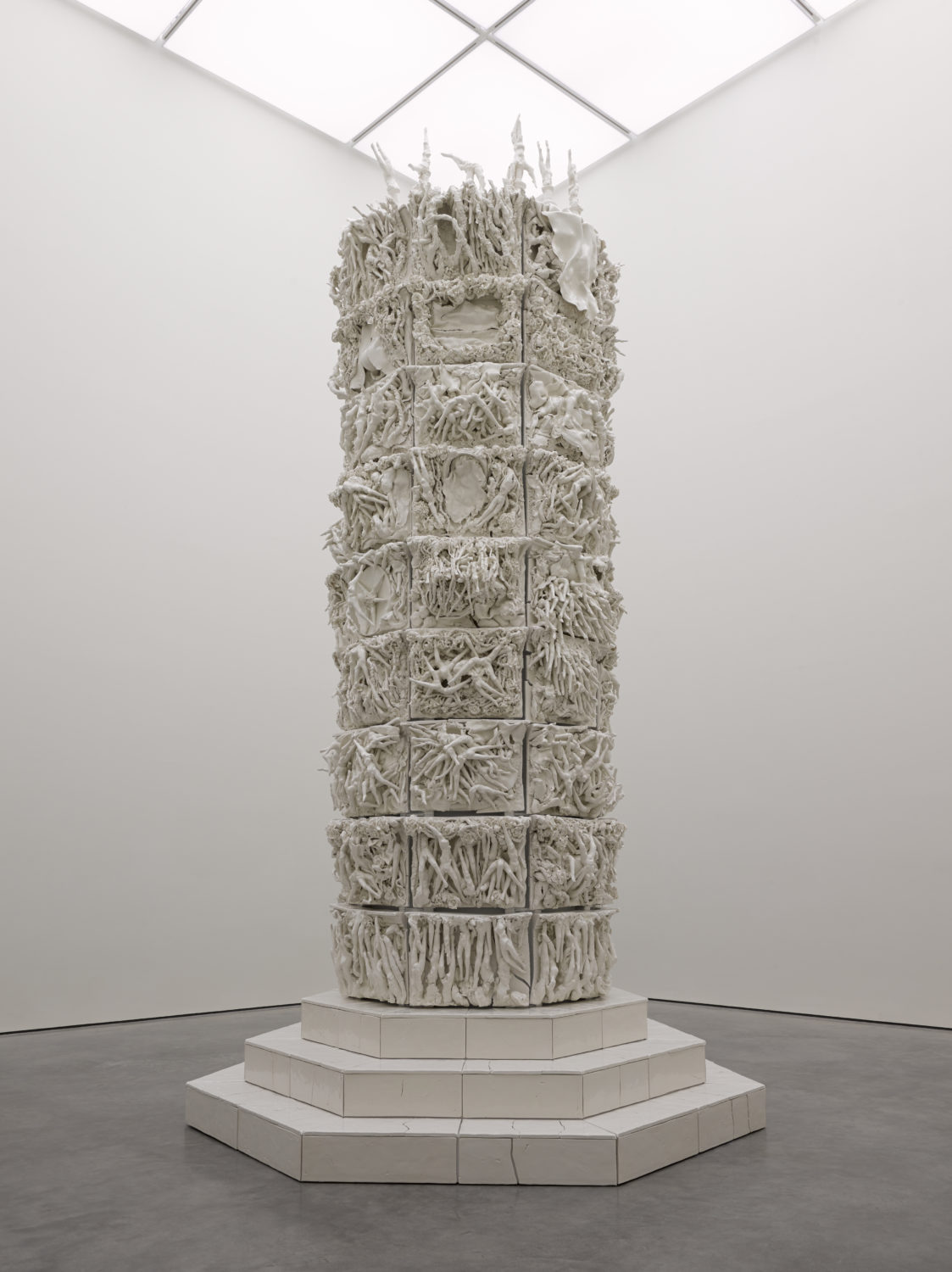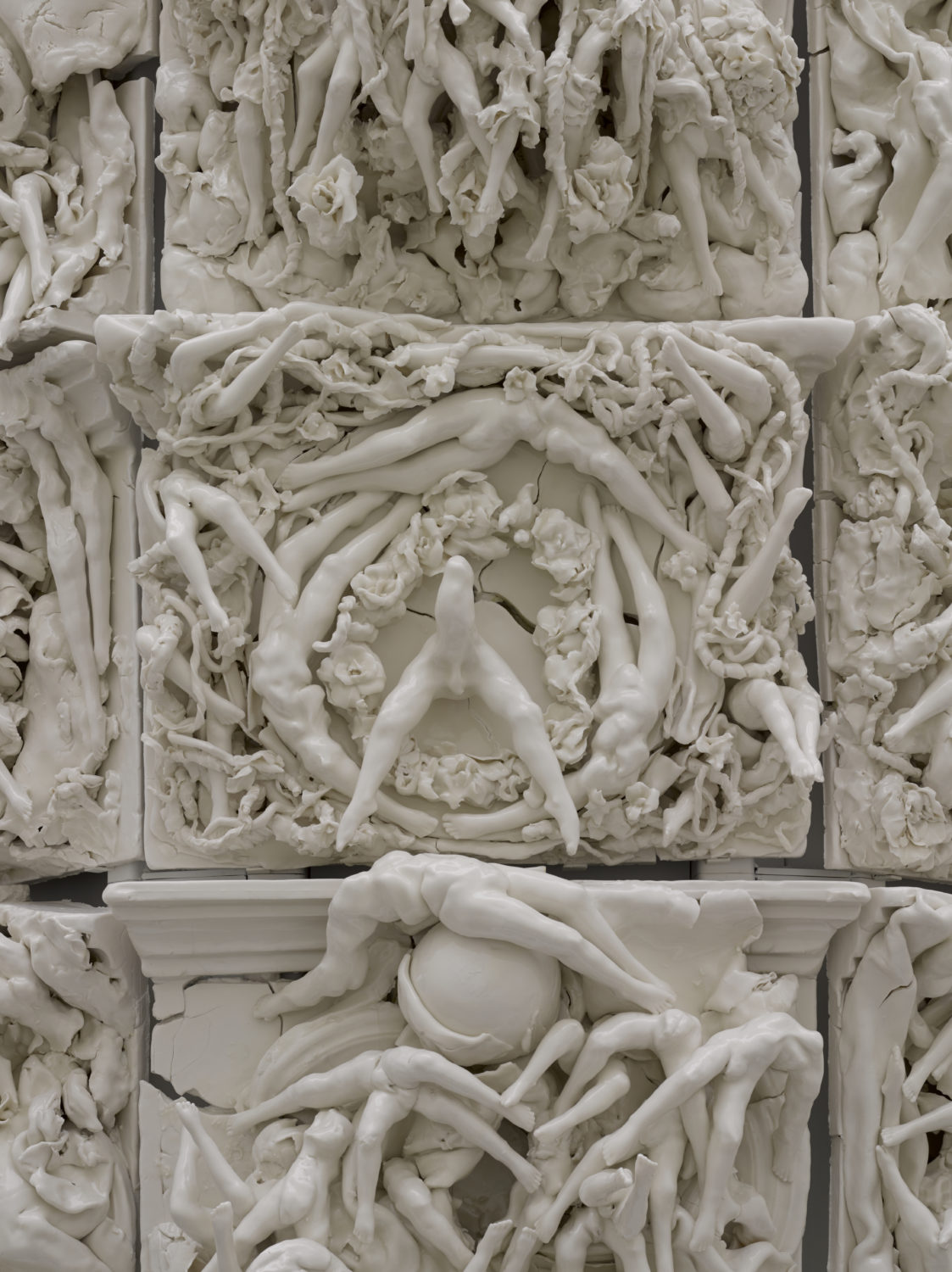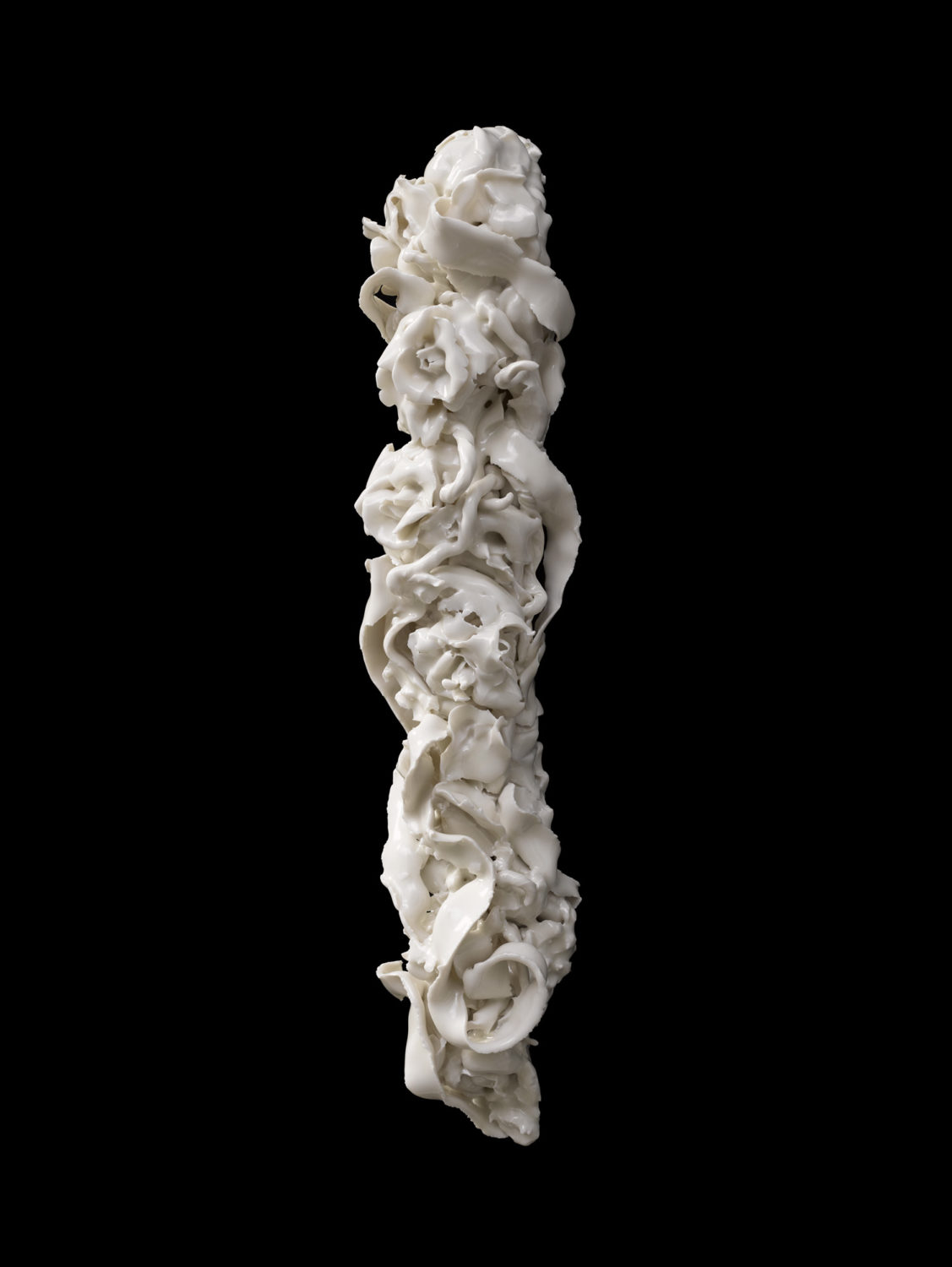Interview: Rachel Kneebone On Her Upcoming Exhibition At Yorkshire Sculpture Park
By Something CuratedClay, and its more refined form of porcelain, have been used for thousands of years to make objects for the home and for display. Artist Rachel Kneebone has developed her own unique form of sculpture, working primarily in porcelain to create highly complex and delicate objects. Her works do not depict the full human form, but allude to the body through the use of a mass of limbs appearing to be in motion. From 10 July 2021, Yorkshire Sculpture Park (YSP) presents Kneebone’s major work 399 Days in the unique environment of its 18th-century chapel. The artist’s most ambitious sculpture to date, previously displayed at the V&A, 399 Days is named after the length of time it took to make; the piece is over five-metres in height and comprises 63 exterior panels. Accompanied by a series of more recent works by the artist, the upcoming exhibition is supported by White Cube Gallery and is a key part of YSP’s 2021-22 programme. To learn more about Kneebone’s fascinating practice and the imminent presentation of her work, Something Curated spoke with the artist.

Something Curated: Can you give us some insight into your background and how you first became interested in making art?
Rachel Kneebone: I have always made things, as if I was born with an itch that needed to be scratched. I would make objects, things: anything demonstrated on Blue Peter, Galt hobby kits, whatever I could find. I don’t think I ever decided to do what I do, it wasn’t even that I thought it was something I can do, it was more about recognising I couldn’t not make things. I guess that’s the ‘drive’ – it’s part of who I am rather than something I chose to be.
SC: What attracts you to the medium of porcelain — and the shade of white consistent in your works?
RK: I started using porcelain during my M.A. Before this I had worked with clay but I was drawn to porcelain by its whiteness. After this aesthetic attraction, once I started working with it, I became embroiled with it as a medium. Or rather, in making I began to learn and understand what its boundaries were, what it would readily do and what it resisted doing. How the material changes from the initial pliable plastic, which is so malleable and responsive to touch, to a different state: with time and exposure to air, it changes – it sort of moves from the substance of Brie to Wensleydale. I had to learn its timing and how to react to the changes detected through touch. This meant learning when to move from hand modelling to using tools, for example. This understanding is from experience, but now I am so used to it it’s like my hands just know. Porcelain also metamorphoses during its firing cycle in the kiln. The material shrinks, which creates movement, the cooling of the clay body and the heat of the kiln can cause fissures and cracks. What I love most here are the splitting and ruptures which fuse creation with destruction. For me, the fracturing is what creates beauty.

SC: Could you expand on the representation of the human body in your compelling sculptures?
RK: I guess the limb – and especially the leg – is the obvious place from which to start. Legs signify movement and this is a core focus of my work. I think the limbs are a way into the work from our immediate recognition of them. With the leg comes the rest of the body, and generally abstraction doesn’t work without a knowledge of the whole: we look at a leg and understand that the body is attached. The work explores ideas of what it is to inhabit the world in our body, as if these are the vessels through which we connect and through which we live our lives. Bodies have a way of knowing that is separate to language, and this is the bit I am most interested in, how it feels to be alive rather than what we actually might think of being alive in the world. Of course our minds and bodies are linked, but as Bataille wrote, it is not the statement of the experience that matters but experience itself.
The work has textures and tempos within it which are as much about body and the sensations of our bodies as the limb is a narrative of ‘body’ as such. In my more recent works, I am not modelling the legs, as the movement has shifted: it is less about the ‘outside’ than about being within, how it feels to move. The ruptures and cracks within the sculptures attest to how we can be broken, and experience loss and despair, yet the work remains ‘whole’ in a certain sense, the sense that this is just the experience of being alive. We are fractured and sometimes fragmented, but we are still in a way there in our bodies in the sense of temporal continuity. We can be broken and yet keep going, then we can rupture and be still for a while: we are always in transition and yet this movement is our identity.

SC: What is the thinking behind the selection of pieces included in your upcoming exhibition at Yorkshire Sculpture Park?
RK: We wanted to show 399 Days in the intimate and contemplative space of the chapel at YSP to see how the work would change, what would be drawn out and what would recede, how the work would shift from the quietness of the space and the surrounding light from the chapel windows, how the changing seasons would affect the light which would in turn shift what we see and how we experience the work. We chose to place Roll in the vestry, due both to its proportions in relation to the space and due to the sarcophagal form of the plinth, bringing to mind tombs and death whilst simultaneously teeming with an abundance of ribbon forms and roses cascading over the edges of the plinth, alive and vital, so that the splits within the plinth are ruptures of creation as much as decay and destruction. Both states, birth and death, make sense in the context of the chapel which has held both christenings, funerals and marriages.
The three wall works, Pulse II, Whorl I and Eddy I are pulsing away from the chapel walls, a counterpoint to the architecture of the chapel and the grid like structure of the wooden panelling and window panes, features which are themselves echoed in the tile-like structure of 399 Days. These works work both with and against the architecture, as they seem to drip down the chapel walls, at the same time bringing the bucolic landscape outside, inside. The drawings in the gallery space were selected from a series Ovid in exile, and they are made by rotating the paper during the process of drawing, making marks and erasing lines to build new forms. As with my sculpture work, these drawings are created by adding and removing, positive and negative, removing line to make form. They continue to metamorphose in this new space, as the context of the chapel changes and renews what we see and how we feel.
SC: What are you currently reading?
RK: I am reading The Poisonwood Bible by Barbara Kingsolver. I was recently lent Unsheltered and when I discover an author I read more, sometimes all that they have written.
Feature image: Rachel Kneebone, 399 Days, 2012-2013. Courtesy the artist & White Cube